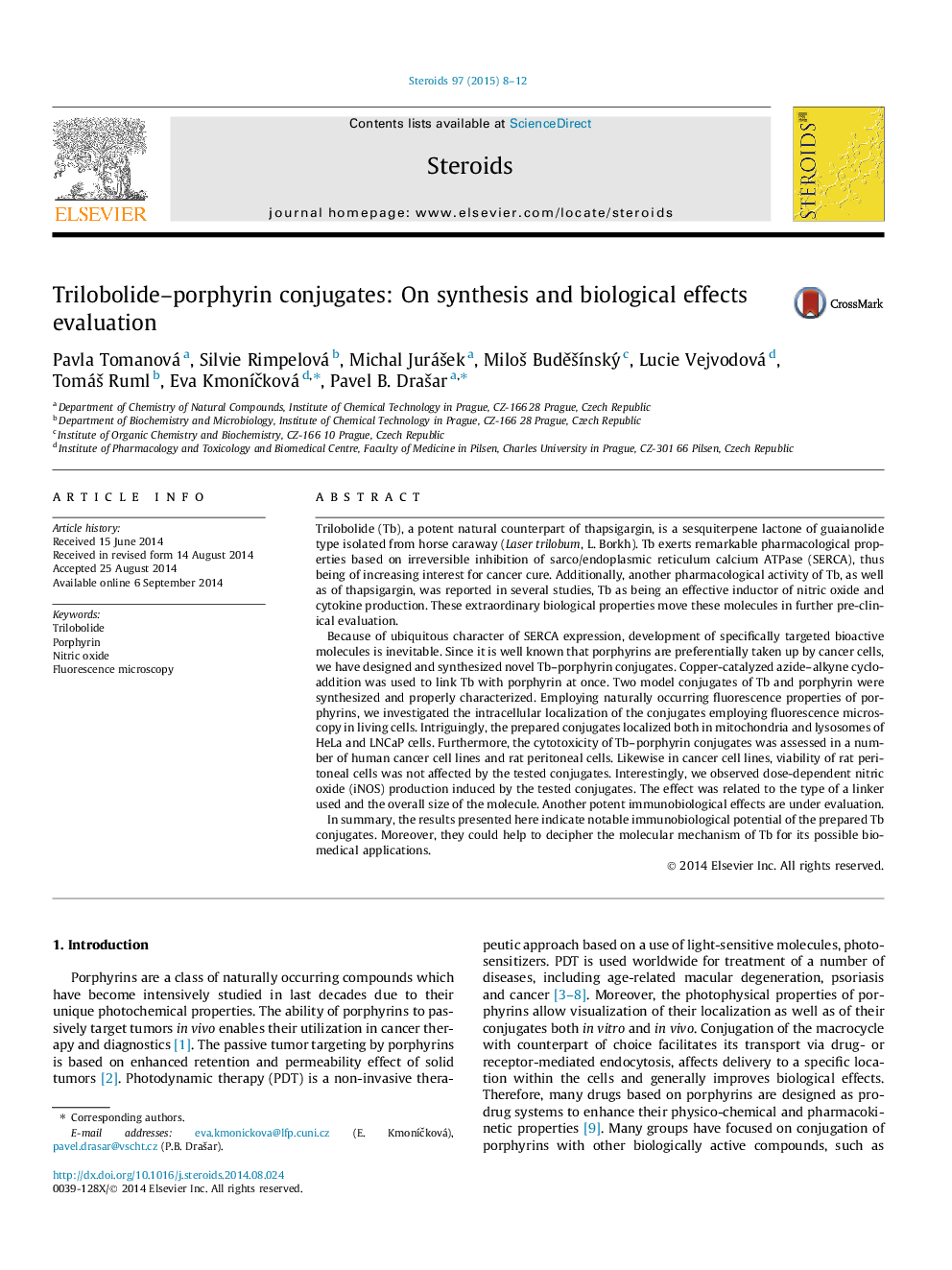| Article ID | Journal | Published Year | Pages | File Type |
|---|---|---|---|---|
| 2027818 | Steroids | 2015 | 5 Pages |
•Trilobolide–porphyrin conjugates were synthesized.•Intracellular localization of the conjugates in living cells was examined.•Cytotoxicity was determined in number of cancer cell lines.•Immunobiological activity of trilobolide–porphyrin was studied.•Nitric oxide production was measured in rat macrophages.
Trilobolide (Tb), a potent natural counterpart of thapsigargin, is a sesquiterpene lactone of guaianolide type isolated from horse caraway (Laser trilobum, L. Borkh). Tb exerts remarkable pharmacological properties based on irreversible inhibition of sarco/endoplasmic reticulum calcium ATPase (SERCA), thus being of increasing interest for cancer cure. Additionally, another pharmacological activity of Tb, as well as of thapsigargin, was reported in several studies, Tb as being an effective inductor of nitric oxide and cytokine production. These extraordinary biological properties move these molecules in further pre-clinical evaluation.Because of ubiquitous character of SERCA expression, development of specifically targeted bioactive molecules is inevitable. Since it is well known that porphyrins are preferentially taken up by cancer cells, we have designed and synthesized novel Tb–porphyrin conjugates. Copper-catalyzed azide–alkyne cycloaddition was used to link Tb with porphyrin at once. Two model conjugates of Tb and porphyrin were synthesized and properly characterized. Employing naturally occurring fluorescence properties of porphyrins, we investigated the intracellular localization of the conjugates employing fluorescence microscopy in living cells. Intriguingly, the prepared conjugates localized both in mitochondria and lysosomes of HeLa and LNCaP cells. Furthermore, the cytotoxicity of Tb–porphyrin conjugates was assessed in a number of human cancer cell lines and rat peritoneal cells. Likewise in cancer cell lines, viability of rat peritoneal cells was not affected by the tested conjugates. Interestingly, we observed dose-dependent nitric oxide (iNOS) production induced by the tested conjugates. The effect was related to the type of a linker used and the overall size of the molecule. Another potent immunobiological effects are under evaluation.In summary, the results presented here indicate notable immunobiological potential of the prepared Tb conjugates. Moreover, they could help to decipher the molecular mechanism of Tb for its possible biomedical applications.
Graphical abstractFigure optionsDownload full-size imageDownload as PowerPoint slide
